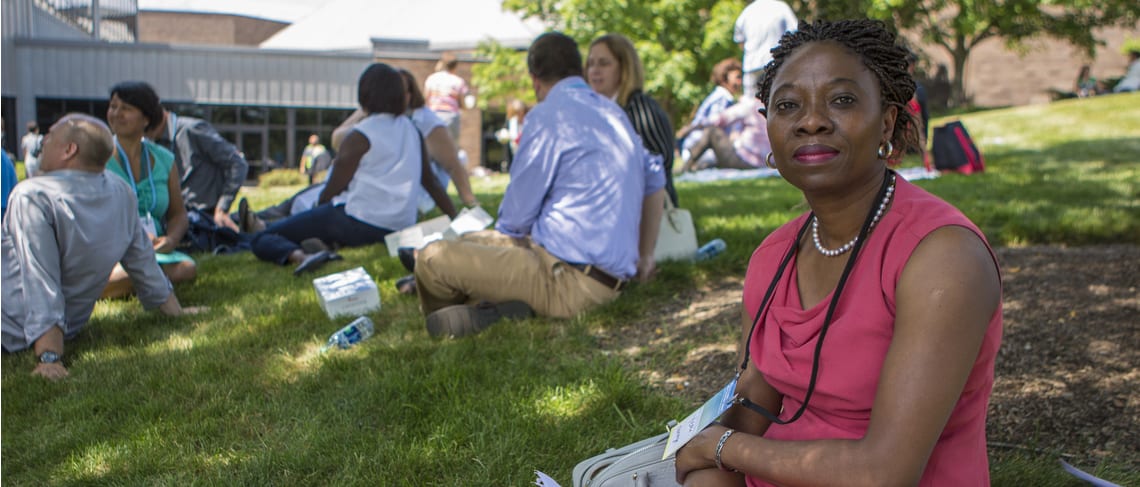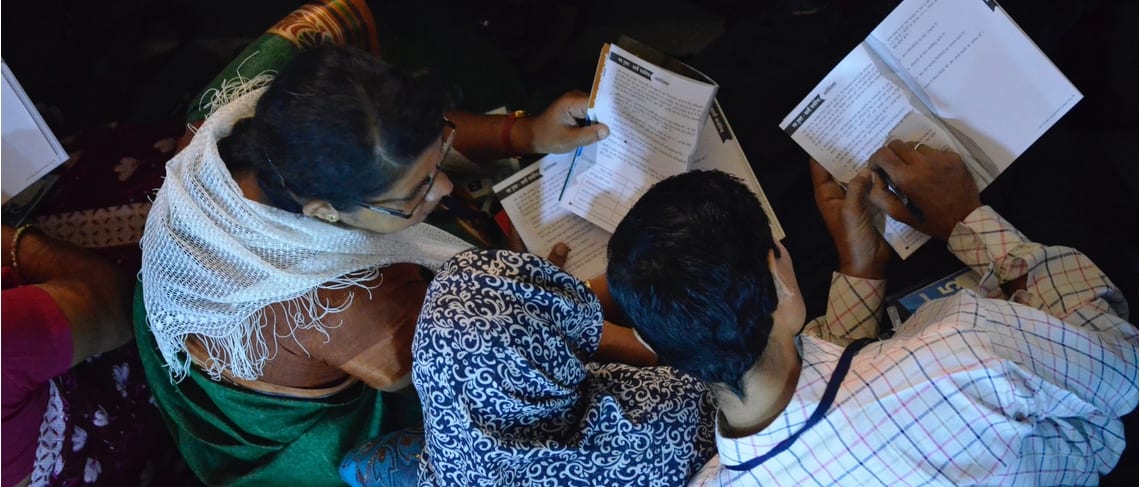
Joseph Grenny (TGLS 2013, 2014) addresses a common frustration leaders experience with electronic communication.
When email was novel 20 years ago, managers began asking us if it should be used for sensitive conversations, such as performance problems or salary negotiations. For years we said “no way.” But as work became more and more virtual, the question changed. People no longer asked, “Should I?” Instead, they demanded, “How can I?”
So our stance has changed too, in large part because we identified people who seemed to be able to raise risky issues in remarkably effective ways over email.
While you should still limit its use for sensitive communication, there are best practices that allow you to benefit from email’s efficiency without suffering much from its constraints. But before you do, ask yourself: “Can I do this well without seeing her face—and without her seeing mine?”
This is because faces matter. A lot. They are the primary tool we use for discerning the intentions of those around us. Princeton psychologist Susan Fiske finds that our primal programming urges us to assess any being that enters our visual neighborhood. The two questions we involuntarily ask are: Do they intend me harm? and Could they carry it out? We make these judgments largely by reading nuances in faces.
When my son Hyrum was three years old, he began to sense that at times he didn’t have my full attention. This was the early days of email and I was occasionally emotionally wired into my computer. He would toddle into my office and begin chattering about something important on his mind. I would respond minimally and at some point, he would climb onto my lap, obstructing my view of the computer, place both hands on either side of my face, turn my head so my eyes locked onto his, and say something wonderful like, “Dad, do you know what Muffy did today?”
In taking control of my head, he was doing more than just trying to focus my attention. He was satisfying his.
Not only do we use faces to gather information, but looking others in the eye also causes us to behave more ethically and empathetically. When someone is out of sight, they are much more out of mind. Have you ever been insensitive to someone in traffic then craned your neck in desperation to avoid eye contact when your victim pulled beside you at the next stoplight? Have you suffered the humiliation of saying something negative about a colleague only to discover she was standing behind you? Have you ever said something in writing that you would never have said in person?
Sure, I have a few relationships where I can text almost anything and get away with it, even something terse like, “Your last report was light on facts.” I can do this because, in these rare instances, if their face puckers up in some unpleasant way, they’ll tell me. They know me well enough that they can imagine the face I had on when I wrote it (curious, but not angry), and if they doubt the mental picture they have of me, they’ll ask.
But these are rare relationships because we tend to trust visual data more than verbal. If someone says, “No, I’m not angry at you,” but their lip is twitching while they say it, we believe the lip not the words that passed over it.
This is problematic in virtual conversations because the massive mental resources that would ordinarily be occupied with scanning a face have nothing to see, so we make it up. We might read the words, “Your last report was light on facts” and imagine your face filled with disdain and your lip curled into a snarl.
In the absence of the accountability and trust that seeing someone’s face promotes, you have to be especially careful. Here are four rules to keep in mind:
Match your history to the bandwidth. If you have enough of a history with a person to predict accurately their reaction to the communication, you can try having the conversation over email. If you don’t know the person well, then you’ll have to bump up the bandwidth of your connection with them. Being in the room would be best. Connecting visually with video conferencing or Skype might give you sufficient visual data.
State your intent before content. You can often head off defensive reactions by opening with statements that clearly communicate your good intentions—or even your fears about your colleague’s potential misunderstanding of your intentions. For example, you might say, “I have concerns I want to express about the Bangalore team. I want to describe them—but I worry you may think I am trying to take the work to Dublin. I am not. I just want our customer to get the best we have to offer. May I describe my concerns?”
Write your email twice. Write the first time for content—get your message across honestly. Then read it slowly, imagining the other person’s face. This will humanize them for you and help you avoid minimizing the strong possibility they will construe something differently from what you intended. Try to put yourself in the other person’s chair and think about how they might feel at each point in your message. Then re-write it with safety in mind. Don’t compromise the content by sugarcoating it or watering it down. Rather, notice those places they may misread your intentions and clarify what you do and don’t want them to hear from you (or see on your face). For example, you might have written, “On the last three software releases, the Bangalore testing team has missed 71 errors.” You imagine their faces as they read it—so you add: “I have no question about the Bangalore team’s desire to perform. And yet…” In less formal relationships, we’ve seen skillful communicators even describe the facial expression they are wearing as they write something to help control others’ interpretation.
If you feel triggered (or they seem triggered), bump up the bandwidth. The instant you read emotion in their response, or feel it yourself—change mediums. Even a phone call lets you hear nuances in tone, silences and other data that help you address emotions. Skype or video conferencing gives you even more information. The temptation when emotions flare is to hunker down and respond from the self-deceptive safety of email. But don’t deceive yourself. It things are going badly with email, they never get better by continuing that way.
It is possible to handle sensitive topics without the benefit of seeing faces, so long as you can accurately imagine them, and discipline yourself to respond to those imagined cues. When it becomes clear either your imagination or interventions are insufficient, make visual contact as soon as possible.
(I first had this published, with minor alteration, in Harvard Business Review, March 24, 2015)

 “The questions I’m asking myself after Jim Collins’ session revolve around my energy: Am I putting it into the right place? Am I investing it and using it to propel my dreams and visions? Or am I using it to help others succeed?
“The questions I’m asking myself after Jim Collins’ session revolve around my energy: Am I putting it into the right place? Am I investing it and using it to propel my dreams and visions? Or am I using it to help others succeed? “I’m in clinical research. I love my job, and thank God for it. I want to end this year better than we started. It was very challenging at the beginning of the year. By God’s grace, I hope to execute all our goals by the end of the year.
“I’m in clinical research. I love my job, and thank God for it. I want to end this year better than we started. It was very challenging at the beginning of the year. By God’s grace, I hope to execute all our goals by the end of the year.















 “I want to see a movement where church leaders wouldn’t be afraid, and would be influencing society. Most Christian people today are living as if they were an atheist, and do not believe in God. They go to church, are active in the choir, will listen to a sermon, but it will not play out in their life with their family and in their workplace. Basically, that is not what Jesus taught. That was a very relevant message that impacted my personal life.
“I want to see a movement where church leaders wouldn’t be afraid, and would be influencing society. Most Christian people today are living as if they were an atheist, and do not believe in God. They go to church, are active in the choir, will listen to a sermon, but it will not play out in their life with their family and in their workplace. Basically, that is not what Jesus taught. That was a very relevant message that impacted my personal life. “There have been major changes in the world, and the Summit has inspired me through the teachings, examples, and testimonies. France used to be a Catholic country, and now the second largest religion is Muslim, with about 5 million Muslims in France. Being a Christian leader in this environment means you to need to be aware of cross-cultural situations and take care of people.
“There have been major changes in the world, and the Summit has inspired me through the teachings, examples, and testimonies. France used to be a Catholic country, and now the second largest religion is Muslim, with about 5 million Muslims in France. Being a Christian leader in this environment means you to need to be aware of cross-cultural situations and take care of people.
Recent Comments